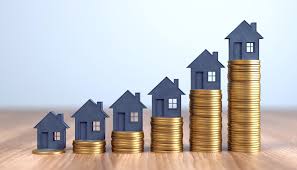Buying a home remains one of the biggest financial goals for many people, especially among millennials and Gen Z navigating rising housing prices and a volatile economy. But even in 2025, with higher interest rates, inflation pressures, and a competitive real estate market, saving for a house is not out of reach — if you use the right strategy. The fundamentals still apply, but they need to be adapted to the current environment.
Il panorama del mercato immobiliare nel 2025
As of mid-2025, housing prices across much of Europe and the U.S. have started to stabilize after years of rapid appreciation. According to Eurostat, house prices in the eurozone increased by about 3.7% year-on-year in Q1 2025 — a slowdown from previous double-digit growth seen during 2021–2022. However, affordability remains a challenge. The average home price in Italy, for example, is now around € 220,000, while in cities like Milan and Rome, it’s significantly higher.
Inoltre, i tassi ipotecari sono ancora elevati. La media dei mutui a tasso fisso in Italia è di circa 3,9% nel 2025, un valore significativamente più alto rispetto al contesto di bassi tassi di interesse del decennio precedente. Ciò significa che è necessario versare acconti più consistenti e una pianificazione finanziaria più strategica.
Ripensare l'acconto
The golden rule of saving 20% for a down payment remains relevant — not because it’s easy, but because it saves you from higher interest costs and insurance premiums. For a € 250,000 property, that’s € 50,000. Saving this amount in just a few years may sound intimidating, but with a clear plan, it’s achievable.
Nel 2025, i libretti di risparmio ad alto rendimento, i titoli di Stato come il BTP Italia e persino i fondi monetari a breve termine offrono tassi di interesse compresi tra il 2,5% e il 4%. Questo li rende veicoli ideali per parcheggiare i propri risparmi in modo sicuro, guadagnando qualcosa in cambio. Piattaforme come Trade Republic o Fineco offrono un facile accesso a questi strumenti anche con capitali modesti.
Automatizzazione e segregazione dei risparmi
One of the most effective tactics is setting up automatic monthly transfers into a dedicated “home fund” account. Treat this fund like a non-negotiable expense — just like rent or groceries. If you can set aside € 500 per month, you’d reach € 30,000 in five years, excluding interest. Add a modest 3% annual return from a conservative investment, and the savings rise closer to € 34,000.
Behavioral finance tells us that “paying yourself first” through automation removes friction and reduces the temptation to spend. Separating the funds from your regular account also helps you avoid “accidental spending.”
Integrare con un reddito secondario
With inflation squeezing regular income, building a side hustle or freelance gig can significantly accelerate your savings rate. Even an extra € 300 per month through tutoring, digital services, or weekend shifts could translate into € 18,000 over five years.
Another alternative gaining traction in 2025 is fractional property investing. While not a substitute for owning your own home, platforms now allow small investments in real estate projects, letting your savings grow alongside the sector you’re hoping to enter.
Utilizzare gli incentivi fiscali dove disponibili
L'Italia offre alcune agevolazioni fiscali per il risparmio attraverso strumenti specifici come i Piani Individuali di Risparmio (PIR), anche se non tutti sono adatti all'acquisto di una casa. Assicuratevi di esplorare tutti i programmi governativi o i bonus (come l'incentivo prima casa per i minori di 36 anni) che possono ridurre le tasse o fornire assistenza all'acquisto. In alcuni casi, potreste risparmiare migliaia di euro semplicemente programmando bene la vostra domanda.
Navigare in un ambiente a tassi più elevati
With mortgage rates remaining above 3%, many are reconsidering whether renting and investing the difference is better. This is a valid question. If you can earn a 6–7% annual return investing instead of buying now, the trade-off deserves analysis. Yet for those with long-term stability and personal preference for owning, locking in a mortgage even at current rates might still make sense, especially if inflation declines over time.
Esempio di grafico:
A 5-year savings projection with monthly contributions of € 500 and a 3% annual return gives you roughly €33,800 — compared to € 30,000 with no interest.
Costruire le fondamenta della vostra futura casa
Saving for a house in 2025 doesn’t require magic — just a smart blend of discipline, optimization, and leveraging available tools. Start by understanding your target amount, break it down monthly, automate the process, and use interest-bearing savings vehicles. Whether you’re five years away or closer than you think, the key is consistent action. Your future home is built brick by brick — and euro by euro.

